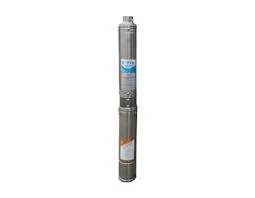Dec . 29, 2024 02:39 Back to list
Submersible Pump Sizing Guide for Optimal Well Performance and Efficiency
Understanding Submersible Well Pump Sizing A Comprehensive Guide
When it comes to maintaining a reliable water supply, the choice of the right submersible well pump is crucial. The sizing of these pumps plays a pivotal role in ensuring that they meet the demands of a specific application, whether it be residential, agricultural, or industrial. In this article, we will explore the factors involved in submersible well pump sizing, providing a clear understanding of how to select the right pump for your needs.
1. What is a Submersible Well Pump?
A submersible well pump is a type of electric pump that is designed to be submerged underwater in a well. This type of pump is commonly used to lift water from deep aquifers. Unlike traditional pumps that operate above the ground, submersible pumps push water to the surface, making them more efficient in many cases.
2. Importance of Proper Sizing
Proper sizing of a submersible well pump is critical for multiple reasons. An undersized pump may struggle to meet water demands, leading to diminished supply and increased wear on the pump. Conversely, an oversized pump may result in energy inefficiency and intermittent operation, which can lead to premature pump failure.
3. Key Factors in Sizing
Several key factors must be considered when sizing a submersible well pump
a. Water Demand
The first step in sizing a pump is to assess the water demand for your specific application. This includes calculating the total flow rate needed, which is typically measured in gallons per minute (GPM). For residential use, consider the number of fixtures and average usage time; for agricultural use, estimate the irrigation needs.
b. Depth of the Well
The depth of the well significantly affects pump selection. The total dynamic head (TDH) is a crucial calculation, representing the vertical distance the pump must lift water plus any additional pressure losses from friction in the piping system. Accurate measurement of the well depth and understanding of static water levels are essential for proper sizing.
submersible well pump sizing chart

c. Pumping Distance
The horizontal distance from the well to the point of use also influences pump selection. Longer distances can lead to pressure losses, requiring a pump with a higher capacity to ensure adequate flow at the destination.
d. Well Conditions
The physical characteristics of the well—such as diameter, casing material, and water quality—can affect pump performance. Additionally, assessing the well's recovery rate (the speed at which water levels replenish) is vital to ensure that the pump can operate effectively without drawing the water level down excessively.
4. Using a Sizing Chart
Most manufacturers provide submersible well pump sizing charts, which offer a valuable reference point. These charts typically show a range of flow rates and TDH ratings depending on the pump model.
By finding your calculated water demand and well conditions on the chart, you can quickly identify available pumps that meet your requirements.
5. Consulting Professionals
While sizing can be simplified using charts, it is always recommended to consult with a professional. Pump specialists can provide insights based on experience and specific application needs, ensuring that you select the best pump for your unique situation.
6. Conclusion
In summary, proper sizing of a submersible well pump is critical to ensure efficient water delivery and long-term reliability. By understanding the fundamentals of water demand, well depth, and conditions, you can make informed decisions when selecting a pump. Utilizing sizing charts, consulting professionals, and remaining aware of the pump's operational environment will allow you to achieve optimal performance from your submersible well pump. Whether for home use or agricultural purposes, the right pump will maintain a steady and reliable water supply, ensuring that you meet your needs effectively.
-
Submersible Water Pump: The Efficient 'Power Pioneer' of the Underwater World
NewsJul.01,2025
-
Submersible Pond Pump: The Hidden Guardian of Water Landscape Ecology
NewsJul.01,2025
-
Stainless Well Pump: A Reliable and Durable Pumping Main Force
NewsJul.01,2025
-
Stainless Steel Submersible Pump: An Efficient and Versatile Tool for Underwater Operations
NewsJul.01,2025
-
Deep Well Submersible Pump: An Efficient 'Sucker' of Groundwater Sources
NewsJul.01,2025
-
Deep Water Well Pump: An Efficient 'Sucker' of Groundwater Sources
NewsJul.01,2025
-
 Submersible Water Pump: The Efficient 'Power Pioneer' of the Underwater WorldIn the field of hydraulic equipment, the Submersible Water Pump has become the core equipment for underwater operations and water resource transportation due to its unique design and excellent performance.Detail
Submersible Water Pump: The Efficient 'Power Pioneer' of the Underwater WorldIn the field of hydraulic equipment, the Submersible Water Pump has become the core equipment for underwater operations and water resource transportation due to its unique design and excellent performance.Detail -
 Submersible Pond Pump: The Hidden Guardian of Water Landscape EcologyIn courtyard landscapes, ecological ponds, and even small-scale water conservancy projects, there is a silent yet indispensable equipment - the Submersible Pond Pump.Detail
Submersible Pond Pump: The Hidden Guardian of Water Landscape EcologyIn courtyard landscapes, ecological ponds, and even small-scale water conservancy projects, there is a silent yet indispensable equipment - the Submersible Pond Pump.Detail -
 Stainless Well Pump: A Reliable and Durable Pumping Main ForceIn the field of water resource transportation, Stainless Well Pump has become the core equipment for various pumping scenarios with its excellent performance and reliable quality.Detail
Stainless Well Pump: A Reliable and Durable Pumping Main ForceIn the field of water resource transportation, Stainless Well Pump has become the core equipment for various pumping scenarios with its excellent performance and reliable quality.Detail
